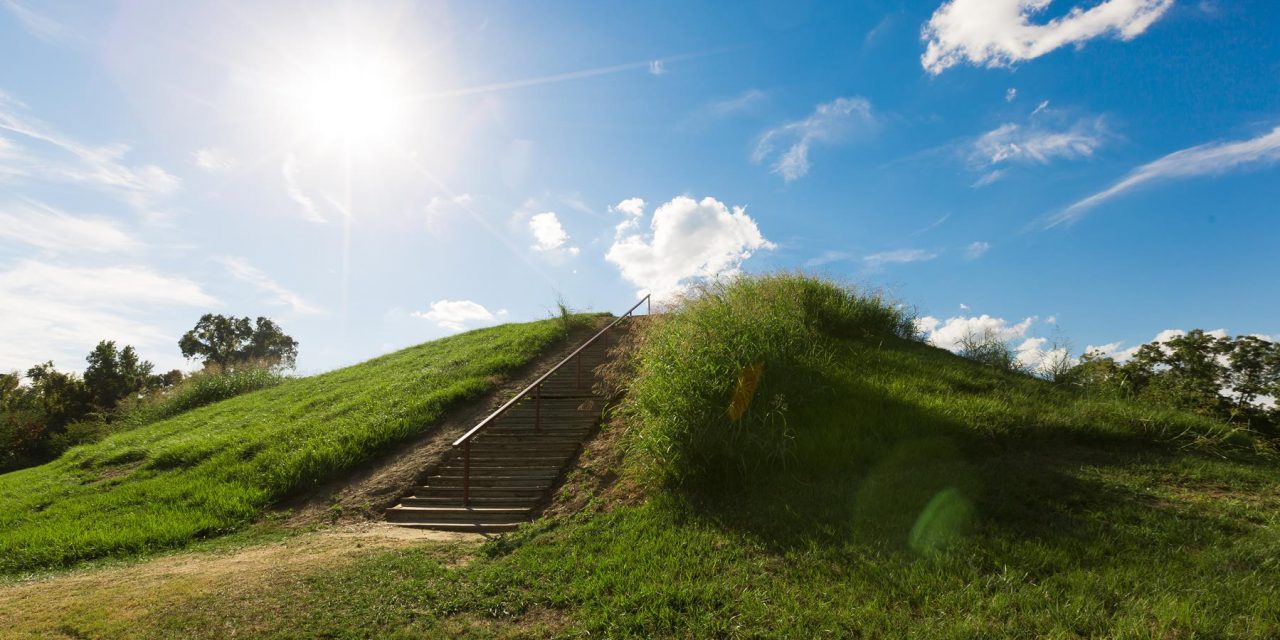Natchez was settled in 1716 and was home to many cotton millionaires. Their homes include The Briars, Rosalie, Dunlieth and Melrose. Longwood is an octagonal mansion that was never finished due to the Civil War. Stanton Hall is a Greek Revival mansion that covers an entire city block. Many mansions such as Monmouth Plantation double as bed and breakfast inns and even the Eola Hotel is a historic site. Attractions in the area include Natchez-Under-the-Hill, once the gambling and red-light district, Church Hill and the Grand Village of the Natchez Indians. The Natchez nearby Emerald Mound was built around 1250 and is one of the largest ceremonial mound sites in the country.
Depart Natchez and stop at Mount Locust, a restored 1780 frontier inn that provided food and lodging to early travelers. Its just a few miles from there to the Ruins of Windsor, the remains of the largest antebellum mansion built in Mississippi and today a popular stop. The home was used as a Union hospital and burned during a party in 1890. Nearby Alcorn State University has the home iron stairway at its chapel. Alcorn was originally a school for planters sons and became one of the country’s first land-grant colleges for African-Americans.
Port Gibson is one of the states best-preserved towns because Gen. U.S. Grant said it was, too beautiful to burn. Church Street here is filled with antebellum homes. First Presbyterian Church has a giant golden hand rising from its steeple and chandeliers from the steamboat Robert E. Lee inside. Temple Gemiluth Chassed is the states oldest synagogue. The Port Gibson Battlefield outside of town is the site of a major Union victory. The town of Rocky Springs is now a park, as it died off due to erosion and yellow fever. The only remaining building is the 1837 Rocky Springs Methodist Church. The last stop before the state capital is Raymond, where the local ladies prepared a lunch for Confederate soldiers that was eaten by advancing Union soldiers who were on their way to Vicksburg.
The 1842 Greek Revival-style Governors Mansion is the second oldest in continuous operation in the country. A block away is the Old Capitol, now the site of the Mississippi Historical Museum. The Agriculture & Forestry Museum recreates turn-of-the-century rural life in Small Town, Miss., with a general store and other buildings over its 40 acres. Next door is the states Sports Hall of Fame and Museum, honoring famous athletes such as Dizzy Dean, Walter Payton, Archie Manning and Jerry Rice.
Extending 444 miles, the parkway is a National Scenic Byway and an All-American Road. It is open for motorists, hikers and bikers, and administered by the National Park Service, keeping it relatively non-commercial. The trace began as a series of Native American trails about 8,000 years ago that were gradually joined together and used by Spanish and French explorers, the British army and settlers. During the early 1800s boatmen would float their goods down the Mississippi River from the Ohio River Valley, bringing livestock, farm produce and coal to Natchez and New Orleans. After they sold their boats for lumber, they would travel the trace back home on foot or horseback. Andrew Jackson and his troops traveled the Old Trace from Nashville to the Battle of New Orleans. The steamboat led to the demise of the trace as a trade route and it became just another local road. In 1937 the Natchez Trace Parkway was begun as a road to follow the path of the original trail. It took 67 years to finish.







